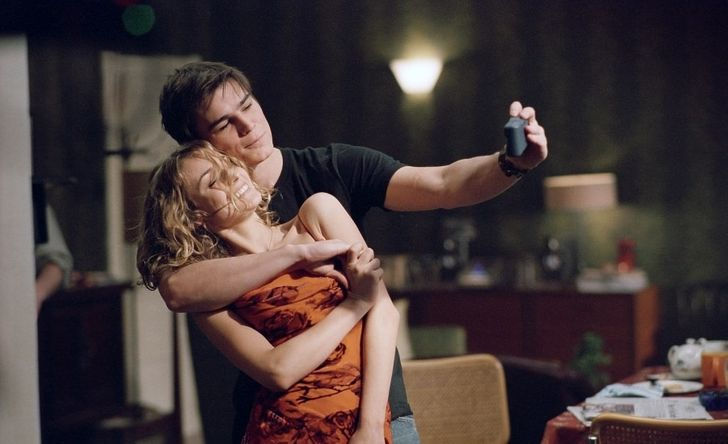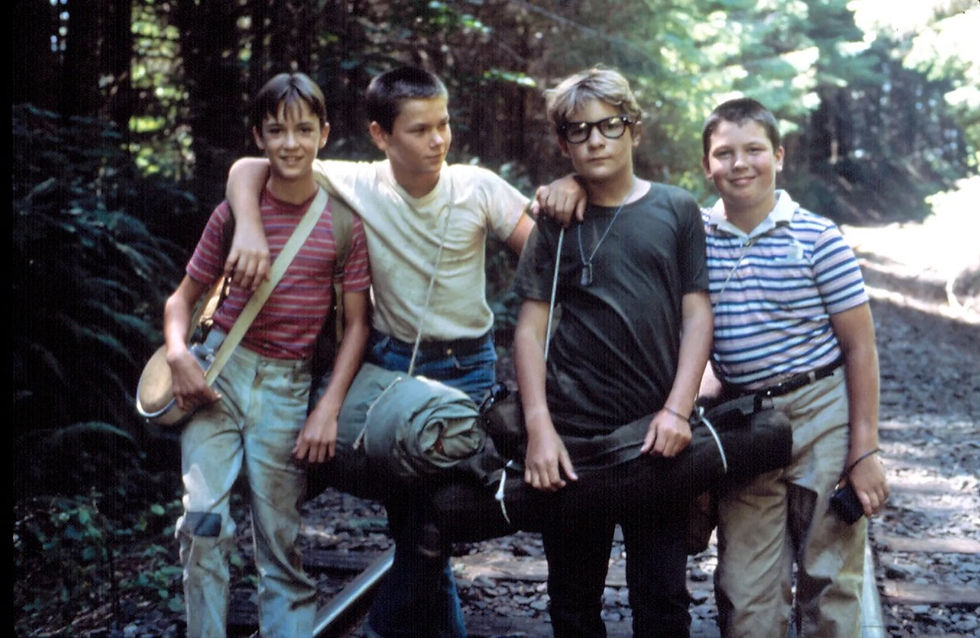Nonverbal Communication in Relationships: Navigating Emotions Without Words
- khailareyno
- Apr 23, 2024
- 17 min read
Updated: Apr 30, 2024

In relationships and friendships, communication goes beyond words. Nonverbal communication plays a crucial role in relationships, often conveying emotions, intentions, and dynamics more powerfully than words alone. In relationships, where understanding and connection are crucial, nonverbal cues play a significant role in how individuals perceive and interact with each other. Deciphering these cues can enhance connections, resolve conflicts, and fortify relationships.
Nonverbal communication can reveal underlying attitudes and intentions in relationships. For example, a person's posture and proximity to their partner can indicate feelings of closeness and intimacy, while a lack of eye contact or defensive body language may suggest discomfort or defensiveness. By paying attention to these cues, individuals can gain valuable insights into their partner's thoughts and feelings, fostering greater understanding and empathy in the relationship.
Additionally, nonverbal cues are also essential for establishing and maintaining rapport in relationships. Mirroring, or subtly mimicking the body language of another person, can create a sense of connection and mutual understanding. Similarly, matching the tone and pace of speech can help to establish a sense of harmony and cohesion in communication.
Lastly, in times of conflict, nonverbal cues can also play a crucial role in resolving issues. Open body language, such as uncrossed arms and a relaxed posture, can signal a willingness to listen and compromise. Avoiding eye contact, on the other hand, can indicate defensiveness or discomfort. By being aware of these cues, you can navigate conflicts more effectively and find resolutions that work for both parties.
In screenwriting, understanding nonverbal cues in relationships are an essential because they add depth and authenticity to characters and their interactions. By incorporating nonverbal communication, such as facial expressions, gestures, and body language, screenwriters can create more believable and relatable characters. These cues help to convey emotions, intentions, and the dynamics between characters, making the storytelling more engaging and realistic. Nonverbal cues also allow for subtlety and nuance in character development, enriching the audience's understanding of the story and its themes.

In previous blog articles, I've covered the following topics, but I'll briefly revisit them here. However, to fully understand the concepts discussed in this article, it's essential to read;
1. "The Eyes Have It: Mastering Facial Expressions in Scripts,
2. "Gestures and Movement: Conveying Meaning Through Actions"
3. "The Power of Posture: How Body Positioning Conveys Messages"
4. "Understanding Human Behaviour: A Foundation for Character Development"
Observe Body Language
Paying attention to how someone stands, sits, and moves can offer valuable insights into their mindset and emotions. For instance, crossed arms or legs often indicate defensiveness or discomfort, suggesting that the person may feel guarded or closed off. Conversely, an open body posture, such as relaxed arms and uncrossed legs, can signal openness and receptiveness, indicating that the person is more relaxed and open to communication.
In relationships, understanding these cues becomes even more critical. Body language can speak volumes about a person's feelings and intentions, often more eloquently than words. Simple gestures like a gentle touch, a warm hug, or holding hands can convey love, comfort, and support. These actions can strengthen emotional bonds and create a sense of closeness and intimacy between partners.
Facial Expressions
Facial expressions play a crucial role in conveying emotions and intentions, often complementing or contradicting verbal messages to add layers of meaning to interpersonal interactions. For instance, a smile while delivering a compliment can enhance its sincerity, while a frown during a joke might suggest disbelief or confusion.
In relationships, facial expressions are particularly important as they can convey a range of emotions and nuances that are essential for understanding and connecting with your partner. For example, a smile can indicate happiness and warmth, while a furrowed brow might suggest concern or confusion. These expressions help partners gauge each other's emotional states and respond accordingly, strengthening their bond. Additionally, facial expressions can reveal underlying feelings that may not be explicitly expressed, providing insights into unspoken thoughts or desires.
Eye Contact
Eye contact is a crucial form of nonverbal communication that plays a significant role in social interactions. It can convey interest, attentiveness, and sincerity, helping to establish and maintain connections between individuals. In addition, eye contact is a powerful way to express emotions, with direct gaze often indicating friendliness and approachability. Conversely, avoiding eye contact can signal discomfort or shyness. Eye contact is also linked to confidence and authority, with strong eye contact often associated with credibility and professionalism.
In relationships, eye contact takes on an even deeper significance. It can foster intimacy, trust, and understanding between partners. Direct eye contact during conversation can convey empathy and attentiveness, showing that you are fully present and engaged in the interaction. It can also enhance emotional connections, allowing partners to share their feelings more openly and authentically. Conversely, a lack of eye contact in a relationship can sometimes indicate discomfort, insecurity, or a desire to avoid confrontation. Overall, eye contact in relationships can help strengthen bonds and create a deeper sense of connection between partners.
Gestures
Hand movements, head nods, and other gestures are crucial components of nonverbal communication that can significantly enhance verbal messages. These gestures can add context, emphasis, and clarity to spoken words, making the communication more effective and engaging. For example, waving a hand while speaking can indicate inclusion or emphasis, while pointing can draw attention to a specific object or direction
In relationships, gestures take on a significant role as they can convey a variety of emotions and intentions. Simple acts like holding hands, hugging, or placing a hand on a partner's shoulder can express love, comfort, and support. Gestures such as nodding in agreement, leaning in attentively, or mirroring the other person's body language can show empathy, understanding, and connection. Moreover, gestures can help resolve conflicts by signaling openness, willingness to listen, and a desire to reconcile.
Tone of Voice
I didn't cover this topic, but it's crucial for understanding behaviour in relationships. Tone of voice is a crucial form of communication because it conveys emotions, attitudes, and intentions. The way someone speaks can often convey more meaning than the actual words they use. For example, a soothing tone can indicate empathy and understanding, while a harsh tone might convey anger or frustration. Tone of voice can also help to clarify the meaning of a message, indicating whether it is meant to be taken seriously, sarcastically, or humorously.
In relationships, tone of voice can be even more critical because it can directly affect the emotional connection between individuals. A warm, affectionate tone can convey love and intimacy, strengthening the bond between partners or friends. Conversely, a cold or hostile tone can create distance and hurt feelings, damaging the relationship. Tone of voice can also be used to show empathy and support during difficult times, helping to comfort and reassure loved ones. Overall, being mindful of tone of voice in relationships can lead to more effective communication and deeper emotional connections.
Context
Consider the context in which the nonverbal cues are occurring. The same gesture or expression can have different meanings depending on the situation and the relationship between the individuals involved. For example, a simple touch on the arm could convey support and reassurance between friends, but the same touch in a professional setting might be perceived as inappropriate or overly familiar. Similarly, a smile from a stranger on the street might be seen as friendly, but the same smile from someone in a position of authority could be interpreted as condescending. Understanding the context is key to accurately interpreting nonverbal cues and avoiding misunderstandings.
In relationships, the context of nonverbal cues is especially crucial as it can deeply impact the emotional dynamics between partners. For instance, a gentle touch on the hand during a conversation can convey intimacy and affection, strengthening the bond between partners. However, the same touch during a disagreement might be perceived as intrusive or dismissive. Similarly, a smile across a crowded room can signal romantic interest, but in a different setting, it might be a gesture of politeness or friendliness. Understanding the context of nonverbal cues in relationships helps partners interpret each other's feelings and intentions accurately.
Consistency
Consistency between verbal and nonverbal cues is crucial for understanding the true meaning behind a message. When someone's words align with their nonverbal expressions, it suggests honesty and transparency. However, incongruence, where verbal and nonverbal cues contradict each other, can indicate deception, hidden emotions, or discomfort with the topic being discussed.
For example, if a person says they are happy but their facial expression appears sad or their body language is closed off, it may suggest that they are masking their true feelings. Similarly, if someone is speaking enthusiastically about a topic but their tone of voice is flat and their gestures are minimal, it could indicate a lack of genuine interest or passion.
Detecting incongruence requires attentiveness and sensitivity to both verbal and nonverbal cues. By observing and interpreting these cues in conjunction, one can gain a more accurate understanding of what the other person is truly feeling or intending to communicate. This skill is particularly valuable in relationships, as it can help to build trust and foster deeper connections based on genuine understanding.
Cultural Differences
Nonverbal communication is deeply influenced by culture, and what may seem like a universal gesture or expression can carry vastly different meanings across different cultures.
Understanding cultural differences in relationships is essential because it helps avoid misunderstandings, fosters empathy, and promotes effective communication. In a diverse world, people from different cultural backgrounds come together in various settings, including personal relationships. By understanding and respecting each other's cultural norms, values, and communication styles, individuals can build stronger and more harmonious relationships.
Cultural differences can affect how people express emotions, handle conflicts, and show respect. For example, some cultures may value direct communication, while others may prefer indirect or subtle ways of expressing thoughts and feelings. Misinterpreting these cultural cues can lead to conflicts or hurt feelings.
Additionally, understanding cultural differences can deepen appreciation for diversity and broaden one's perspective. It can also help individuals navigate complex social interactions and build more inclusive and supportive relationships. Overall, cultural understanding in relationships promotes respect, empathy, and effective communication, which are essential for healthy and successful relationships.
Let's examine what's happening in this scene:
Stranger Things 3 (2019)
In this scene from "Stranger Things" Season 3, Episode 1, Chief Hopper (played by David Harbour) asks Joyce Byers (played by Winona Ryder) out for dinner at Enzo's, a local restaurant. The scene is filled with nonverbal cues that reveal the characters' emotions and intentions.
Throughout the scene, the characters' facial expressions play a crucial role in revealing their inner emotions and intentions. Hopper's nervous yet determined expression, coupled with his slight smile, suggests that he is making an effort to appear calm and collected despite his feelings of nervousness. His smile indicates a sense of hopefulness, hinting at his desire for Joyce to accept his invitation. On the other hand, Joyce's surprised yet pleased expression, as seen in her smile and raised eyebrows, indicates that she is taken aback by Hopper's invitation but is also genuinely happy about it.
In this scene, Hopper's body language initially reveals his nervousness and uncertainty about how Joyce will respond to his invitation. He shifts his weight from one foot to the other, a common sign of discomfort or anxiety, indicating his apprehension about taking this step in their relationship. However, as Joyce reaches out to put her hand on his, he gains courage, and his body language becomes more assertive as he asks her out for dinner.
In contrast, Joyce's open body language signals her receptiveness to Hopper's invitation. She faces him directly, leaning in slightly, which indicates her interest and engagement in the conversation. Her body language conveys a sense of openness and warmth, suggesting that she is receptive to Hopper's advances.
In the scene, eye contact plays a crucial role in conveying their emotions and intentions. Initially, as Hopper gathers the courage to ask Joyce out for dinner, his eye contact with her is tentative, reflecting his nervousness and uncertainty. He may briefly look away or avoid direct eye contact, signaling his apprehension about how Joyce will respond.
As Hopper progresses in his invitation, his eye contact becomes more steady and focused, indicating his sincerity and determination. He maintains eye contact with Joyce to gauge her reaction and convey his earnestness. Joyce, on the other hand, meets Hopper's gaze with a mixture of surprise and curiosity, indicating her interest in what he has to say.
When Joyce puts her hand on Hopper's, there is a moment of shared connection reflected in their eye contact. Their gaze lingers, suggesting a mutual understanding and unspoken communication between them. However, Joyce's subsequent hesitation and breaking of eye contact when she pulls her hand back may indicate a shift in her emotions. This change in eye contact could signify her uncertainty or reluctance to fully engage in a romantic or intimate interaction with Hopper, despite her initial receptiveness.
In this scene, Hopper's offer to take Joyce out to dinner can be considered a significant gesture. While there are few notable physical gestures, such as hand movements or nods, Hopper's invitation itself speaks volumes about his feelings towards Joyce. By suggesting a dinner date, Hopper is expressing a desire to deepen their relationship and spend more time together in a romantic context. This gesture goes beyond simple verbal communication, conveying his interest and affection for Joyce in a subtle yet meaningful way. It also signifies a shift in their relationship, moving beyond their usual interactions and potentially hinting at the possibility of a romantic connection between them.
Additionally, Joyce's gesture of putting her hand on Hopper's hand is significant in nonverbal communication. It can be interpreted as a form of touch that conveys comfort, reassurance, or intimacy. In this context, Joyce's action could indicate a moment of emotional connection or empathy towards Hopper. It suggests that she's supportive of him or understanding of his feelings, which is why she touches his hand.
However, her subsequent hesitation and pulling her hand back indicate a change in her emotional state. This could suggest that while Joyce may have initially been receptive to Hopper's gesture, she may have had a change of heart or realized the implications of her actions. Her pulling her hand back could signify a moment of hesitation, uncertainty, or even reluctance to fully engage in a romantic or intimate interaction with Hopper. It's possible that Hopper misunderstood her intention, interpreting her gesture as a romantic one, whereas Joyce may have meant it more as a gesture of reassurance or friendship.
As for the tone of voice, Hopper's tone is noticeably softer than usual in this scene, a departure from his typical authoritative and assertive demeanor, especially given his role as a policeman. This softness could indicate his attempt to be more gentle and inviting in his approach towards Joyce. It suggests a degree of vulnerability and sincerity as Hopper steps outside his usual behaviour to express his feelings for Joyce.
On the other hand, Joyce's voice is warm and receptive, reflecting her appreciation for Hopper's gesture. Her tone conveys a sense of friendliness and openness, indicating her supportiveness towards hopper as he tries to find the right words that he will say to mike and eleven later on in the season. Additionally, this tone also indicates that she is receptive to Hopper's invitation. This warm tone could also suggest a level of comfort and familiarity between the two characters, hinting at their long-standing relationship and mutual respect for each other.
In this scene, consistency between verbal and nonverbal cues plays a significant role in conveying their emotions and intentions. Hopper's verbal invitation to dinner is accompanied by nonverbal cues such as nervous body language and tentative eye contact, which are consistent with his words. His shifting weight and hesitant gestures reflect his nervousness and uncertainty about how Joyce will respond.
As for Joyce, her initial reaction is also consistent with her nonverbal cues. Her surprised expression and open body language suggest that she is receptive to Hopper's invitation. However, her hesitation and pulling back her hand after briefly touching his hand indicate a change in her emotional state. This inconsistency between her initial openness and later hesitation suggests that she may have had a change of heart or realized the implications of her actions.
Overall, this scene effectively uses nonverbal communication to convey the characters' emotions and the changing dynamics of their relationship. Hopper's nervous yet hopeful demeanor, combined with Joyce's surprised but intrigued response, adds depth to their interaction and sets the stage for further development in their relationship as the season progresses.
How can you successfully accomplish this in scriptwriting? Here are some ways:

Character Introduction
Introduce characters by incorporating significant nonverbal cues that subtly reveal their personalities and relationships.
Understanding a character's background is crucial when writing a character because it shapes who they are, how they behave, and what motivates them. A character's background includes their upbringing, cultural and social influences, past experiences, and significant events that have shaped their personality and worldview. By understanding these aspects of a character's background, a writer can create a more authentic and believable character.
For example, a character who grew up in a wealthy, privileged family might have certain attitudes and behaviours that reflect their upbringing, such as a sense of entitlement or a lack of understanding of the struggles of others. On the other hand, a character who grew up in poverty might have a more cynical outlook on life and be more resourceful and resilient as a result of their experiences.
Understanding a character's background also helps to create consistency in their behaviour and motivations throughout a story. It provides a foundation for the character's actions, helping to explain why they react to certain situations in particular ways.
Here are brief ways to introduce a character:
Focus on Impact: Introduce characters in a way that immediately grabs the audience's attention and gives them a sense of the character's essence. This could be through a distinctive physical trait, a unique mannerism, or a compelling action.
Character Arc: Plan a character arc for your character. How do you want them to change or grow throughout the story? Understanding where your character starts and where you want them to end up will guide their development and help you create a compelling narrative.
Reveal Personality: Use the introduction to reveal key aspects of the character's personality. This could be done through their dialogue, actions, or interactions with other characters. Show, don't tell, the audience what kind of person the character is.
Contextualize: Provide context for the character's introduction. Where are they? What are they doing? How do they fit into the story world? This helps the audience understand the character's role and motivations.
Create Intrigue: Leave room for curiosity. A good character introduction should make the audience want to learn more about the character. This could be through hints at a mysterious past, conflicting actions and words, or a unique backstory.
Stay True to the Character: Ensure that the character's introduction aligns with who they are throughout the story. Consistency is key in creating believable characters that resonate with the audience.
Keep it Concise: While it's important to make an impact, avoid overly long or detailed introductions. Aim for brevity while still conveying all the necessary information about the character.
Consistency in Nonverbal Cues
Maintain consistency in characters' nonverbal behaviours to establish their personalities and relationships.
Consistency in characters' nonverbal behaviours is essential for establishing their personalities and relationships throughout a story. For example, if a character is portrayed as shy, they should consistently exhibit closed-off body language, such as avoiding eye contact, fidgeting, or keeping their arms crossed. This behaviour not only helps to establish the character's shyness but also reinforces it throughout the story.
Consistency in nonverbal behaviours can also be used to highlight relationships between characters. For instance, two characters who are close friends might exhibit similar body language, such as mirroring each other's gestures or leaning in when they speak. On the other hand, characters who are in conflict might exhibit more aggressive or defensive body language, such as standing with their arms crossed or avoiding physical contact.
Nonverbal Responses to Dialogue
Use characters' nonverbal responses to dialogue to express emotions and reactions.
Incorporating nonverbal responses to dialogue can add depth to characters' emotions and reactions, enhancing the overall richness of a scene. These nonverbal cues can be subtle yet powerful, offering insights into a character's inner thoughts and feelings that may not be explicitly stated in the dialogue. For example, a character might raise their eyebrows and lean forward in excitement when hearing surprising news. On the other hand, a furrowed brow and a hesitant gesture might accompany a character's hesitant response, indicating their uncertainty or doubt.
By incorporating these nonverbal cues, writers can create more realistic and compelling characters, drawing readers or viewers deeper into the story. They can also help to establish the tone of a scene, whether it's lighthearted and playful or tense and dramatic.
Physical Interaction
Show characters engaging in physical interactions that reflect their relationships.
Showing characters engaging in physical interactions that reflect their relationships can add depth and authenticity to their connections. The way characters interact with each other—whether they make eye contact, touch each other, or maintain physical distance—can reveal the nature of their relationship. For example, a warm embrace between two characters might indicate a close bond, while awkward or tense interactions could suggest underlying conflict or unease.
A hug between friends, for instance, can convey warmth, closeness, and a long-standing bond. The way they embrace, whether it's a quick, tight hug or a lingering, affectionate one, can reveal the nature of their friendship and the level of comfort they share. Conversely, a handshake between strangers or acquaintances might signify formality or a more reserved relationship. The firmness of the handshake, the duration of the contact, and the accompanying body language can all provide subtle cues about the characters' initial impressions of each other and their willingness to engage further.
These physical interactions can also evolve over time, reflecting changes in the characters' relationships. A handshake that starts off as formal and distant may gradually become more relaxed and friendly as trust and familiarity develop between the characters. Similarly, a hug between two characters who were once close friends but have drifted apart might become more awkward or strained, highlighting the changes in their relationship.
These interactions can convey a wealth of information about the characters' emotions, intentions, and histories, enriching the storytelling experience for readers or viewers.
Subtext in Nonverbal Cues
Use nonverbal cues to convey subtext and deepen the audience's understanding of relationships.
Nonverbal cues play a crucial role in conveying subtext and enriching the audience's understanding of relationships. Take, for instance, a character who offers a smile to mask their true feelings of jealousy or resentment. This simple gesture can speak volumes about the character's inner turmoil and the complexities of their relationship.
In this scenario, the smile becomes a facade, a mask that the character wears to conceal their jealousy or resentment. This creates a tension between what is shown on the surface and what lies beneath, adding depth and intrigue to the story. The audience is invited to decipher the character's true intentions and feelings, drawing them further into the narrative.
Furthermore, nonverbal cues offer an opportunity for character development, enabling the audience to witness inner conflicts and struggles. This deeper understanding of the characters' motivations and actions goes beyond surface-level storytelling, inviting the audience to explore hidden aspects of the narrative.
Nonverbal Cues in Conflict and Resolution
Incorporate nonverbal cues during conflict and resolution scenes to intensify tension or demonstrate emotional development.
In conflict and resolution scenes, nonverbal cues can be a powerful tool to heighten tension or showcase emotional growth. During moments of conflict, characters' body language, facial expressions, and gestures can amplify the tension, providing visual cues that mirror the intensity of the situation.
Cenched fists suggest a readiness for action or a desire to control one's emotions, while a tightened jaw reflects inner tension and resolve. Narrowed eyes can convey a sense of focus or intensity, indicating that the character is deeply involved in their emotions. On the other hand, pacing or restless movements can indicate a sense of inner turmoil or conflict, as the character struggles to find a resolution or release for their emotions.
In resolution scenes, nonverbal cues play a crucial role in portraying emotional development and growth in characters. As the conflict is resolved, characters may exhibit changes in their body language, facial expressions, and gestures that reflect a shift in their emotional state.
Softening of facial expressions, relaxed body posture, and open gestures can signify a release of tension and a willingness to reconcile. For instance, a character who previously avoided eye contact might now hold a steady gaze, indicating newfound confidence or sincerity. These subtle changes in nonverbal cues help to convey the emotional journey of the characters and deepen the audience's engagement with the story.
Environmental Context
Consider the environment in which characters interact, as it can influence their nonverbal behaviour.
Personally, I've noticed that the environment plays a significant role in how I behave. Therefore, it's important to consider the environment in which characters interact, as it can greatly influence their behaviour. A character's demeanor and body language can vary based on the setting, reflecting their comfort level and emotional state. For instance, in a familiar and comfortable environment, such as their own home or a favourite café, a character may appear more relaxed, with open body language and easy-going gestures. In contrast, in a tense or unfamiliar environment, such as a crowded street or a high-pressure meeting, the same character may exhibit more closed-off body language, such as crossing their arms or avoiding eye contact, indicating feelings of discomfort or anxiety.
Moreover, the physical characteristics of the environment can impact nonverbal behavior as well. A cramped space may evoke feelings of claustrophobia, leading to tense body language and a desire for physical distance. Conversely, an open and spacious environment may encourage more relaxed and open gestures, reflecting a sense of ease and comfort."
Cultural Nuances
Be mindful of cultural nuances in nonverbal communication, as gestures and expressions can hold different meanings in various cultures. These differences can significantly impact how characters are perceived by an audience and can influence the authenticity and relatability of their portrayal. It's essential to conduct thorough research to understand these nuances and incorporate them into your characters' behaviours authentically. Doing so not only helps avoid stereotypes but also promotes a more inclusive representation of different cultures, enhancing the overall storytelling experience.
Overall, nonverbal cues play a vital role in relationships and friendships, offering a powerful tool to deepen connections, resolve conflicts, and build strong, meaningful relationships based on trust and understanding. Paying attention to these cues and responding appropriately can significantly enhance your interactions with others.


